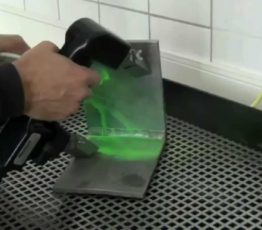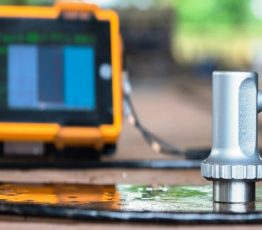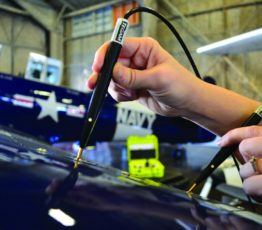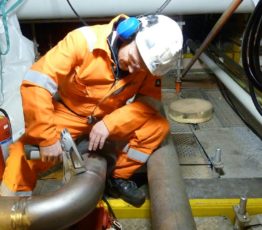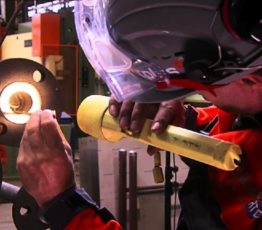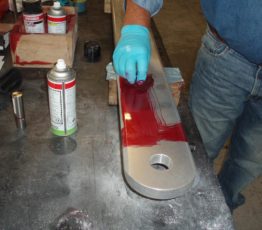- HOME
- ABOUT US
- APPROVALS
- JOBS
- OUR SERVICES
- INSPECTION
- TRAINING
- CONSULTANCY
- IOSH
- PERSONAL CERTIFICATION
- MY FILES
- BLOG
- CONTACT US
- LOGIN
- HOME
- ABOUT US
- APPROVALS
- JOBS
- OUR SERVICES
- INSPECTION
- TRAINING
- CONSULTANCY
- IOSH
- PERSONAL CERTIFICATION
- MY FILES
- BLOG
- CONTACT US
- LOGIN
© 2024 BSAFE SAFETY. Created for free using WordPress and Kubio
B Safe Safety & Security Consultancy
NON DESTRUCTIVE TESTING (NDT)
Non Destructive testing is technique to use find out imperfections/defects in welding & steel structure mostly used for Pressure Vessel, Boiler, Storage Tanks, Piping & all type of steel & Welded structure, there are several techniques for non destructive testing as follows.
NDT – VISUAL TESTING (VT)
Visual testing is the observation of a test object or specimen, either directly with the eyes, or indirectly by utilizing optical instruments, by an inspector or technician to evaluate the presence of surface anomalies, or an object's conformance to a specification.
Visual examination is the most basic non-destructive testing method, which precedes and is used in conjunction with any other NDT method. Visual inspection is a method that ranges from simply looking at a part to see if surface imperfections or defects are present and visible, to using video inspection systems and small diameter bore scopes to reach into areas with limited access.
The portable video scopes combines light weight with reliability and ease of use with advanced features to allow inspections in various positions and conditions.
NDT - Ultrasonic Testing (UT)
Visual testing is the observation of a test object or specimen, either directly with the eyes, or indirectly by utilizing optical instruments, by an inspector or technician to evaluate the presence of surface anomalies, or an object's conformance to a specification.
Visual examination is the most basic non-destructive testing method, which precedes and is used in conjunction with any other NDT method. Visual inspection is a method that ranges from simply looking at a part to see if surface imperfections or defects are present and visible, to using video inspection systems and small diameter bore scopes to reach into areas with limited access.
The portable video scopes combines light weight with reliability and ease of use with advanced features to allow inspections in various positions and conditions.
NDT - Ultrasonic Testing (UT)
Productivity and quality are the buzz words in quality control and in-service inspection and ultrasonic non-destructive testing (NDT) is certainly the answer. Ultrasonic technology is used to measure wall thickness, detect hidden cracks and other anomalies affecting structural integrity.
The wide use of ultrasonic for the non-destructive testing of construction components and material has increased the importance of the method for industrial quality control. In ultrasonic testing, high frequency sound waves ranging from 10MHz-1MHz are transmitted into a material to detect surface and subsurface discontinuities.
• Conventional Ultrasonic Testing (UT):
Conventional Ultrasonic Testing equipment works with the principle of sending a pulsed beam of high-ultrasound from a handheld transducer, which is placed upon the surface of the object being tested. This wave will be disturbed and then partially returned from internal imperfections or from the back of the material wall. The return sound is displayed upon the screen of the ultrasonic equipment, presenting the amplitude of the pulse and the duration taken for return to the transducer. By measuring this sound a skilled operator can identify location and orientation of imperfections respective the wall thickness of the material. Acceptance criteria define whether or not the indication is acceptable or rejectable.
• Ultrasonic Wall Thickness Testing (WT):
One of the most basic ultrasonic methods applied is using a zero degree dual transducer probe to send an ultrasonic beam into a component and receiving the ultrasound energy bounced back from the far wall of the component. Thus a pulse-echo technique, where the time travelled from the excitation pulse to the first echo signal is used to determine the material thickness. These tests are normally done with probe frequencies ranging from 5 to 10 MHz and can measure thicknesses from 0.7mm to 200mm, and in temperature ranges of -5 ºC to 500 ºC.
NDT - Magnetic Particle Testing (MT)
Magnetic particle testing is a widely established non destructive method for the detection of surface breaking flaws as well as sub-surface flaws with depths of 2-3mm. The method is accomplished by inducing a magnetic field in ferromagnetic materials. The surface is coated with a white contrast paint and over this paint iron particles suspended in liquid are applied. Surface and near surface flaws produce magnetic poles and iron particles are attracted and concentrated, producing a visible indication of the defects on the surface of the material. The length of an indication can be accurately determined, but the depth cannot be determined with this method.
NDT - Liquid Penetrant Testing (PT)
Liquid penetrant testing is a traditional non-destructive method for inspection of surface breaking flaws such as cracks and porosity in test objects with non-porous surfaces. The tested surface is cleaned and coated with a penetrant solution either a visible or fluorescent dye that is drawn into the discontinuity by capillary action. The excess solution is removed from the surface, but the penetrant remains in the surface breaking flaws. A white developer is then applied to draw the penetrant out of the defects and shows a contrast image. After the evaluation of the indications the surface is cleaned.
Liquid penetrant testing can be used on relatively dirty surfaces, but the sensitivity is decreased, but a fluorescent penetrant can also be used that gives increased sensitivity. The length of an indication can be accurately determined, but the depth cannot be determined with this method.
IS NDT TEST IS NECESSARY TO CONDUCT?
NDT is the only technique to check out defects in welded structures, if we use the welded structure as mention above with out testing so there is chance of failure of structure, so before put in service its necessary to check there is no imperfection in welded structure by using different NDT Techniques.
Documentation & Reporting
Upon the completion of NDT test, an initial test report will be issued, providing detailed information about the test subject result.
Later on a certificate will be issued carrying the B Safe Safety Stamp, our certificates and initial reports are made to be easy to understand, simplicity and accuracy are our aim when its come to Certification & Documentation.
B Safe Safety is an authorized Body for analysis, inspection, and certification services in UAE..
© 2024 BSAFE SAFETY. Created for free using WordPress and Kubio
